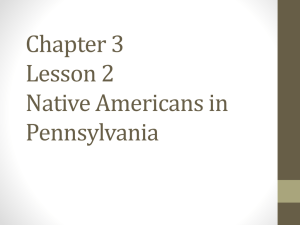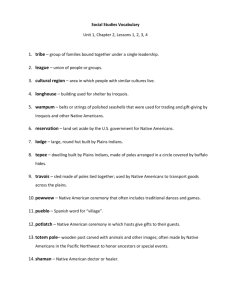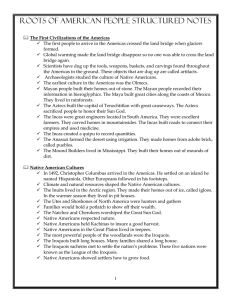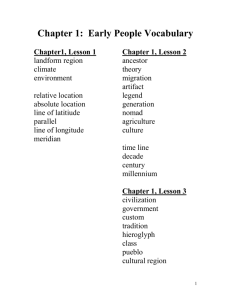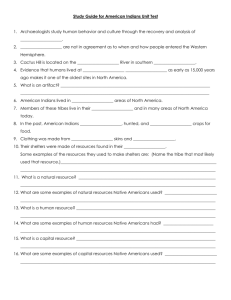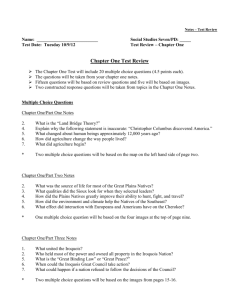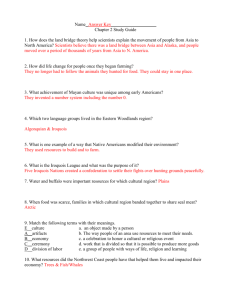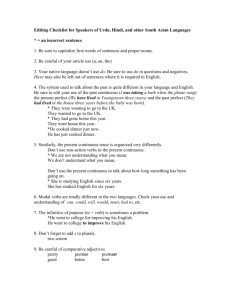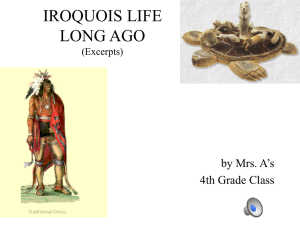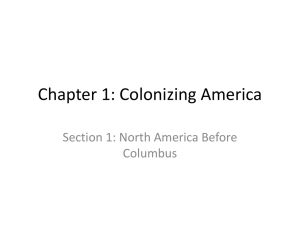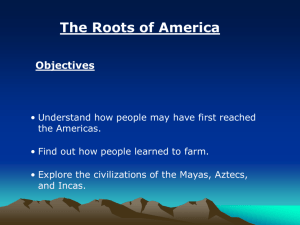Name
advertisement
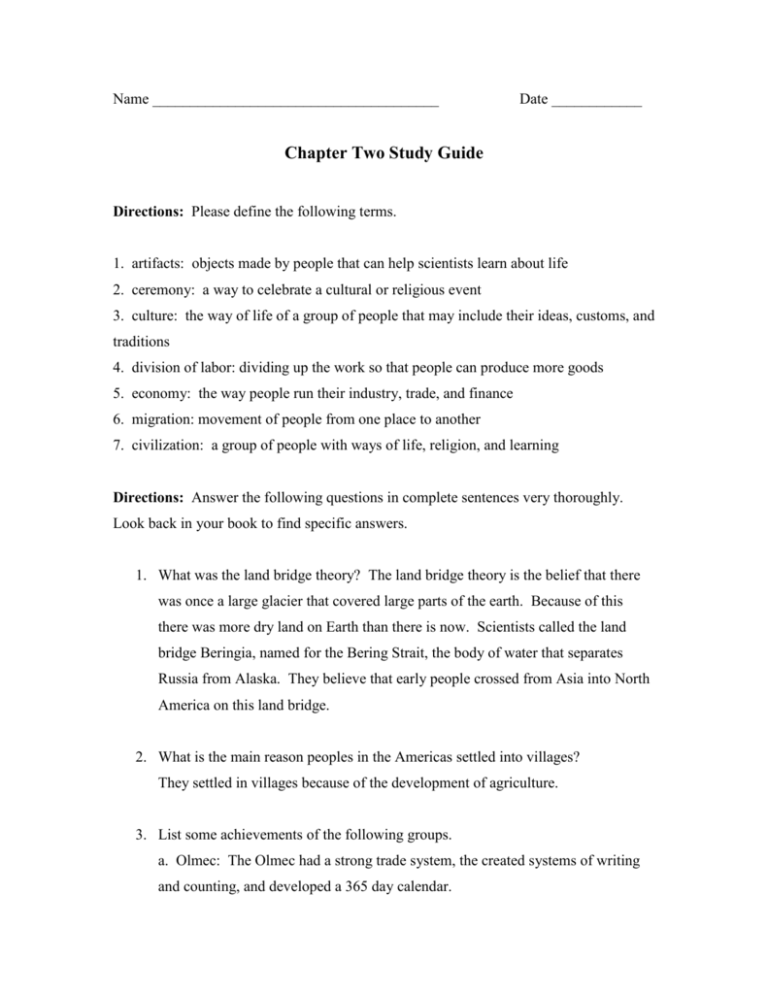
Name ______________________________________ Date ____________ Chapter Two Study Guide Directions: Please define the following terms. 1. artifacts: objects made by people that can help scientists learn about life 2. ceremony: a way to celebrate a cultural or religious event 3. culture: the way of life of a group of people that may include their ideas, customs, and traditions 4. division of labor: dividing up the work so that people can produce more goods 5. economy: the way people run their industry, trade, and finance 6. migration: movement of people from one place to another 7. civilization: a group of people with ways of life, religion, and learning Directions: Answer the following questions in complete sentences very thoroughly. Look back in your book to find specific answers. 1. What was the land bridge theory? The land bridge theory is the belief that there was once a large glacier that covered large parts of the earth. Because of this there was more dry land on Earth than there is now. Scientists called the land bridge Beringia, named for the Bering Strait, the body of water that separates Russia from Alaska. They believe that early people crossed from Asia into North America on this land bridge. 2. What is the main reason peoples in the Americas settled into villages? They settled in villages because of the development of agriculture. 3. List some achievements of the following groups. a. Olmec: The Olmec had a strong trade system, the created systems of writing and counting, and developed a 365 day calendar. b. Maya: The Maya developed their own writing system and a counting system that include zero. They built over 100 stone cities. 4. What was the main purpose of the Iroquois League? The Iroquois League helped resolve conflicts. 5. Describe the homes and resources of each of the following groups. a. Eastern Woodlands: Iroquois and Algonquian The Eastern Woodlands group relied on trees and wood. The Iroquois lived in longhouses and the Algonquian lived in wigwams. The Iroquois and Algonquian were grouped according to the languages they spoke. b. The Plains: The Plains Indians relied on buffalo for clothing, tools, utensils and shelters. People in the Central Plains generally lived in lodges and the nomads of the Great Plains lived in tepees. c. The Southwest and West: The Indians of the southwest had little resources. They were able to grow corn, beans, and squash, but needed trade to get resources they did not have. They used stones, mud, clay, and straw for homes, pottery and baskets. The Puebloans lived in pueblos made from adobe and the Navajo build homes called hogans. The people in the west relied on dry brush to build homes and hunted buffalo or fished. d. Northwest: The people of the northwest relied a great deal on fishing. Salmon was a staple food and they used whales for food and used the fat to burn in lamps. They used hollowed out logs for canoes. They used wood for homes which were like longhouses, but bigger. e. Arctic: The people hunted and used animal skins for clothes and tents. Oil was used for light and heat and bones were used for tools. The Aleut lived in houses with beams made of whalebone and walls of sod and in the winter many Inuit lived in igloos made of ice. Some lived in tents of animal skin or sod.
